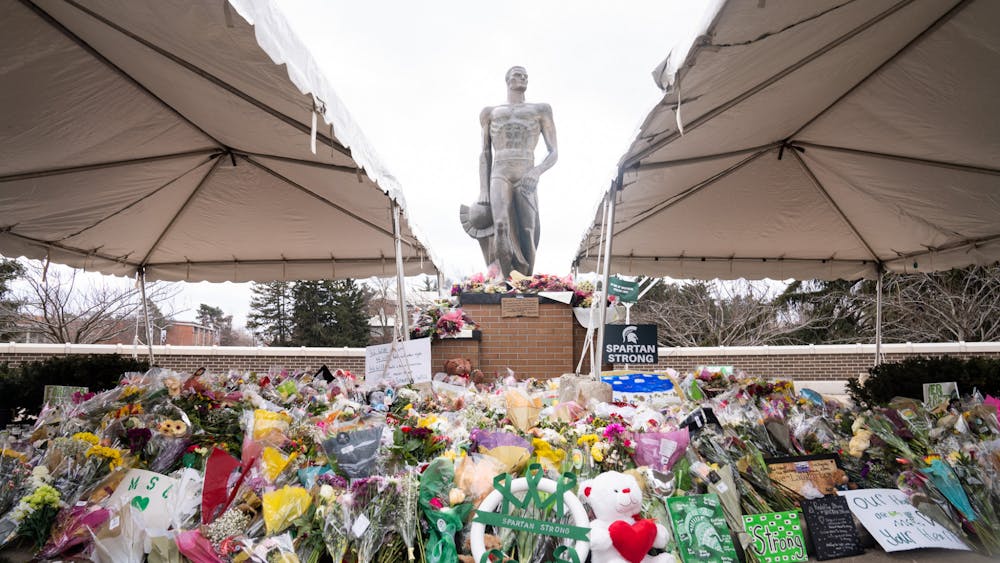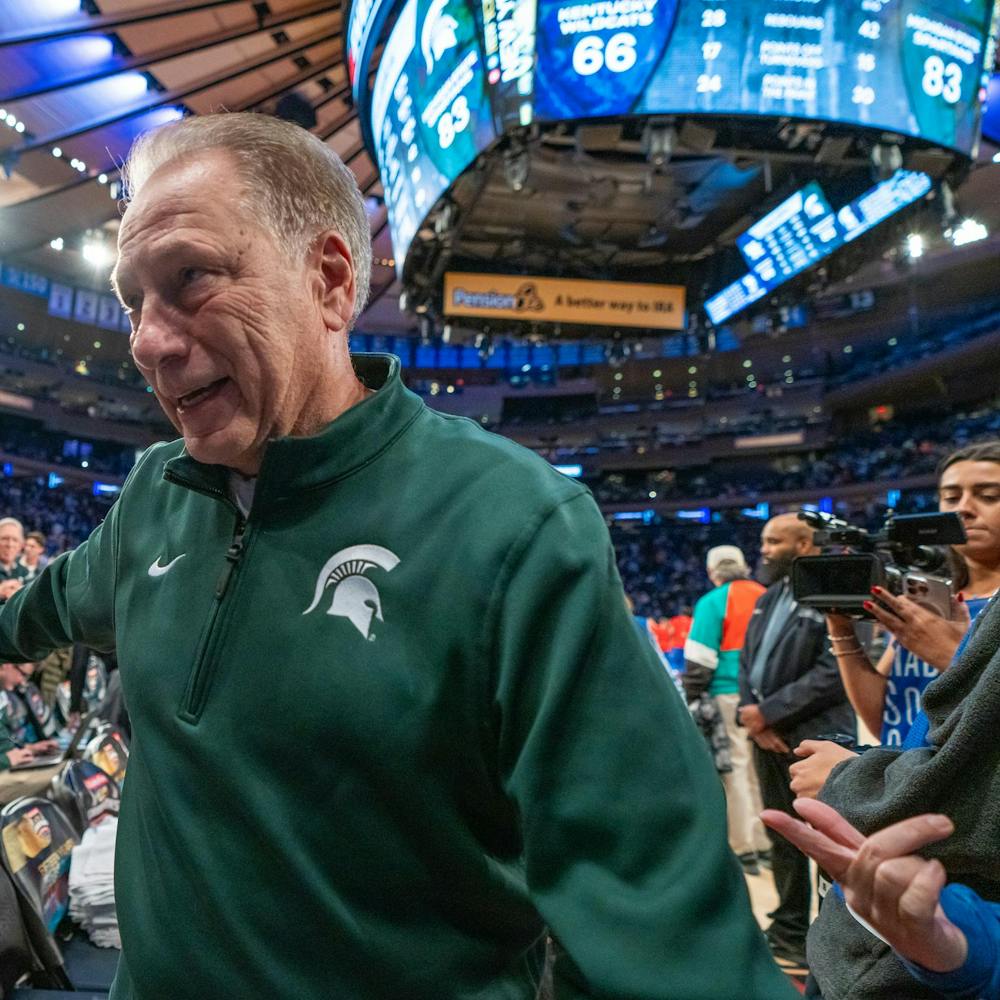This time, Díaz-Muñoz was there to unveil the artwork he painted for the two-year anniversary of the shooting. His oil painting is part of the museum’s "Art in the Aftermath: Healing Gun Violence through Artivism" exhibition, which aims to reclaim the museum space for healing.
His painting is an abstraction of the horror that occurred in just 15 minutes that night.
Because the painting wasn’t a hyper-realistic depiction of what happened, he used colors, shapes and angles to convey the emotion and energy he felt in the classroom.
When the shooter entered, he felt the temperature plummet.
“I felt as though you took these windows out, and all of a sudden the cold came in, and we're freezing,” Díaz-Muñoz said.
He used blue on the tiling of the floor and on the walls to resemble the coldness, and a pale grey — almost white — when painting his students to convey the feeling of shock.
“When you’re in the face of danger, something happens where your blood is going to where it needs to the most and you turn pale,” Díaz-Muñoz said.
Soft, rounded brushstrokes in pale gray form the delicate figures of the students, capturing both their vulnerability and tenderness. The violence is felt rather than overtly seen in the painting with subtle hints of red evoking the presence of blood.
The students blur together, indistinct and interconnected, embodying the panic they shared, he said. Cutting through this unity are erratic, angular brushstrokes resembling the chaos of gunfire.
The decision not to give the shooter a face was deliberate for Díaz-Muñoz.
“Having a face didn’t go along with someone who had no feelings, no humanity left in them,” he said. “I didn't pay more attention to the details other than just the silhouette of something there, because to me, he was no longer human at that moment, just a killing machine.”
The days following the shooting, Díaz-Muñoz felt nothing but hatred for the shooter. Through time, however, his anger gave way to a broader understanding — one that framed the shooter as a product of societal failures.
“Someone who reaches that point doesn’t get there by coincidence,” Díaz-Muñoz said. “You get there because your life has been miserable, you’ve suffered from so much emotional pain where any tenderness in you, any empathy, is gone. All there is left is someone who just wants to get back to the world.”
Amongst the depictions of violence were glimpses of hope. He painted yellow light gleaming through the bottom right corner of the painting, a full white moon and a bright star shining through the window.
When Díaz-Muñoz loses a loved one or has gone through something terrible, he turns to the sky, finding solace in the distant, constant presence of the moon and stars. To him, they are silent witnesses, unmoved by human tragedy, and symbolic of something greater.
“Even though the light of the star is far, far away, it can also be associated with hope,” he said.
Behind the angular brush strokes of the shooter is another glimpse of hope at the door. After the shooter left his classroom, Díaz-Muñoz pinned himself to the door in fear that he would return. Instead, it was the police that came, offering a sense of relief that this terror would soon be over.
The only element missing from the painting was himself, as this was a reflection of his observation capturing what unfolded that night.
Support student media!
Please consider donating to The State News and help fund the future of journalism.
Díaz-Muñoz was initially hesitant to do this painting for the anniversary, as this was his return to art after he left it behind 40 years ago to become a professor.
“I was afraid whether I would still have the dexterity in my hands to do precise work,” he said.
However, it was his sabbatical trip to Italy the semester after the shooting that gave him the confidence to do this.
As he traveled from museum to museum, carefully capturing over 6,000 photos of art, he felt his interest in art had reawakened. It was this trip that was crucial to creating this piece, he said.
Returning to art wasn’t just about picking up the brush again; it also meant reliving the painful memories of that night. For him, this meant feeling his survivor’s guilt all over again.
In the days following the shooting he questioned why he survived while two of his students didn’t. They were just starting their lives, and he had lived most his, he said.
However, it was doing this painting that reminded him why he had this second chance to live: to do something good.
“I had a second chance not just to complain, not to whine about life,” he said. “No, I got a second chance to do something about it.”
He wanted to do this painting to inspire others to make a change against gun violence, not wait for another tragedy to happen.
“I mean, it's going to happen, it's become part of our culture, unfortunately,” he said. “I am an optimist, and I think eventually things will change, but it's going to take a little contribution from every single person, not just me, but every single MSU. They can make a difference. They can vote.”
From seeking refuge at the museum to now showcasing his painting after a 40-year hiatus in art, the space and his creative revival have become central to his healing process.
“This process has made me confront things that I need to confront,” he said. “It has helped me address my survivor's guilt by showing me the connection of me surviving and being able to do something for the community. So I think creating art is helping me heal therapeutically.”
Discussion
Share and discuss “MSU professor's abstract painting captures moments of horror he witnessed during shooting” on social media.







